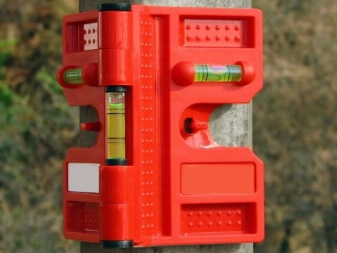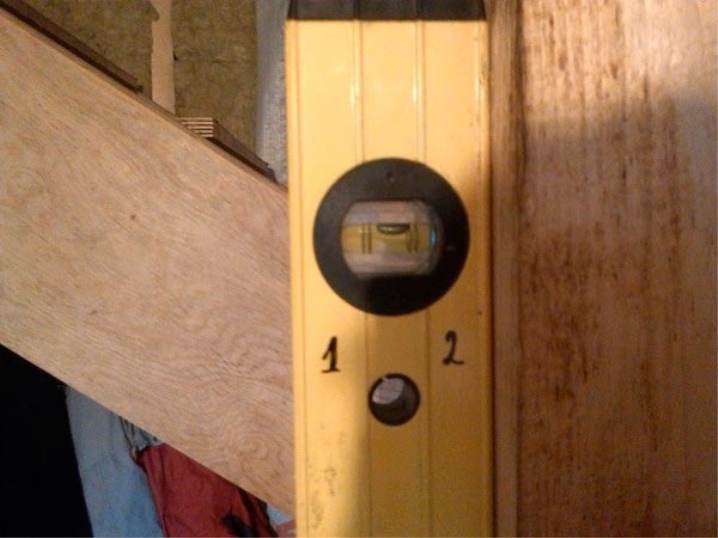How to check the building level for accuracy?

The building level is a high precision instrument. It is used to determine the position of objects, surfaces, tools and other building components. Most often it has a rectangular shape, sometimes it is equipped with stiffening ribs. The measurement is carried out by means of air bubbles placed in special flasks with markings. The standard level allows you to measure the position along the horizontal and vertical axis.
Some models are also equipped with an angular level, with which you can measure the position along the inclined axis. In this case, the diagonal drawn through an angle of 90 degrees is taken as the reporting point. A common disadvantage and frequent breakdown of the building level is a violation of the accuracy of measurements.


Peculiarities
The bubble level is sensitive to shocks and other mechanical influences - even a single drop from a low height can lead to a decrease in accuracy or its complete loss.
Even at a new level, measurement accuracy is sometimes violated. This can be the result of careless handling during the manufacturing and packaging stages. Also, deviations may appear as a result of violations of transportation rules or improper storage conditions in a warehouse in a store.

How to identify a deviation?
Even at the stage of choosing and buying a product in a store, its accuracy should be checked. There are several ways to identify deviations. For example, you can compare the indicators of the selected level with the indicators of one or two other levels... It is recommended to do this by placing the instruments one at a time on the same horizontal or vertical surface. If the indicators of the selected level differ from the indicators of the other two, then this means that the first one works with deviations.


If the level has already been in use for some time, then it must be checked for correct readings in order to avoid the negative consequences of working with such a device. The check is carried out for all planes: vertical and horizontal.


Horizontal plane
It is necessary to put the level on a conditionally flat surface, while the frame of the device should not wobble on unevenness. The lower working side must adhere tightly to the measured surface - in this position, the position of the air bubble relative to the flask scale is fixed. Then the level is turned 180 degrees and applied to the same surface by the working side. The position of the air bubble relative to the designation lines is again fixed. If the first readings do not coincide with the second, then the level is faulty and needs to be adjusted.

Vertical plane
Checking the level for the accuracy of measuring the vertical plane is carried out in the same way. The only difference is that the device does not unfold, but turns over and is applied not by the working side, but by the opposite side. Differences in the readings will also indicate that the level is knocked down.

Calibration
Adjustment of the accuracy of the bubble level readings is possible only for those instruments, the design of which allows this to be done. Some level models have bubble blocks that are glued or otherwise statically mounted into the body. Other varieties contain blocks that are bolted down, which makes it possible to adjust their position.Before calibrating the instrument at home, you need to make sure that its design allows it to be carried out. To adjust the work of the level in one plane or another, you will need a flat surface, a screwdriver, glue, a hydraulic level, a ruler and a plumb line.


With the help of a hydro level, two marks are set on the wall, which are strictly at the same level. To achieve high accuracy at this stage, manipulation is best done with two people. These marks are connected by a line drawn using a straight ruler.
The line should not be too thick, as this can affect the quality of the measurements. The level is applied sideways to this line. Its working side should go strictly along the line. When it is exposed, the deflection of the air bubble from the desired position will become apparent. The nature of its deviation will indicate the side to which the bubble block needs to be moved.


In order to adjust the position of the bubble block, it is necessary to unscrew the bolts that hold it in the level body. The displacement is done very carefully, with small amplitudes, since a displacement of even 0.5 mm can affect the position of the bubble. When the air bubble is exactly in the middle (between the two marking lines), it is necessary to fix the block. For this, superglue is used, which is poured along the perimeter of contact between the block and the case.
For the reliability of fixing, you can use a folk remedy-superglue hardener - baking soda.
Only then are the bolts screwed into place. If you twist them earlier, they will return to their original position, which will return the bubble block to its original state, deviated from the level.

Adjust the level for the vertical plane as described below.
The plumb line is hung along the wall. A vertical line can be drawn along its cord by placing two marks. It is also possible to tune straight along the cord, but this method is less effective as the plumb line on the cord will constantly move.
The level is applied sideways to the wall. Its working side should go strictly along the line. When it is installed, the location of the air bubble outside the two marks on the bulb will indicate the side of the deflection. This deviation is eliminated in the same way as the horizontal violation.
After correcting the readings of the device and fixing the bubble block with glue and hardener, further adjustment becomes impossible. Attempting to reposition the bulb may damage it and damage the body.


See a video below on how to check a bubble building level for accuracy.













The comment was sent successfully.